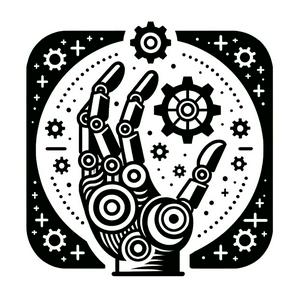Yamaha's Asia Expansion, SoftBank Shakes Up ABB, and the Unstoppable Rise of Smart Cobots
This is you Robotics Industry Insider: AI & Automation News podcast.Thanks for tuning in to Robotics Industry Insider. Today, we move beyond the headlines to reveal what’s shaping the industrial robotics and automation world for October 16, 2025. This week, insiders are buzzing about Yamaha’s newly announced joint venture with Toyo Automation of Taiwan, a move set to expand Yamaha’s industrial robot lineup across Asia. By leveraging Toyo’s automation expertise, Yamaha aims to push the envelope in precision assembly, smart manufacturing, and cobot deployment in logistics and electronics production, echoing a wider industry shift toward collaborative and flexible automation technologies. In the latest market shake-up, SoftBank Group finalized its acquisition of ABB’s robotics business, ushering in new possibilities for AI-driven solutions in smart factories. Industry analysts expect this combination of ABB’s advanced robotics hardware and SoftBank’s AI software capabilities to yield breakthroughs in machine learning-based automation, especially in logistics, automotive, and consumer goods supply chains.At the Second Annual Fizyr Robotics & Automation Conference, innovators showed off camera-based robotic vision systems and real-time deployment demos. These advances point to a future where robots can not only see but reason, with AI empowering industrial robots to adapt to changing production lines and carry out complex tasks with minimal human intervention. According to Grand View Research, the global industrial automation market will exceed two hundred twenty-six billion dollars in 2025, with a steady compound annual growth rate of nearly eleven percent through 2030. The Asia-Pacific region leads in deployments, while North American robot orders surged four point three percent in the first half of 2025, as reported by Automation World. Collaborative robots captured a quarter of that share, reflecting the unstoppable rise of automation in automotive manufacturing and beyond.For listeners keeping an eye on technical innovation, highlights this week include Machina Labs partnering with Toyota to develop adaptive metal forming via AI, CarbonSix’s launch of a toolkit that uses imitation learning to cut configuration time on robotic systems, and ABB’s investment in LandingAI to make robot vision more intuitive and accessible. From predictive maintenance successes to smarter human-machine interfaces, practical takeaways center on investing in pilot projects with scalable AI foundations, retraining employees for synergy with cobots, and leveraging data-driven insights for process optimization. As industry partnerships and acquisitions accelerate, insiders advise automating not just for cost savings, but for resilience, customization, and environmental goals, as governments increasingly incentivize sustainable manufacturing.Looking ahead, expect continued growth in artificial intelligence integration, more adaptive and collaborative robots, and sharper focus on lights-out manufacturing. The skilled labor gap, environmental pressures, and intensifying global competition will drive ever-smarter automation. Thanks for joining Robotics Industry Insider. Check back next week for more analysis and inside information. This has been a Quiet Please production, and for more from me, visit Quiet Please Dot A I.For more http://www.quietplease.aiGet the best deals https://amzn.to/3ODvOtaThis content was created in partnership and with the help of Artificial Intelligence AI


